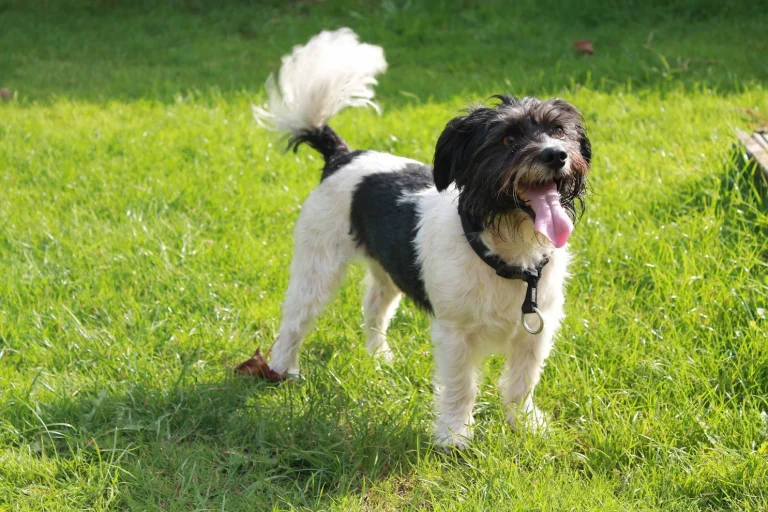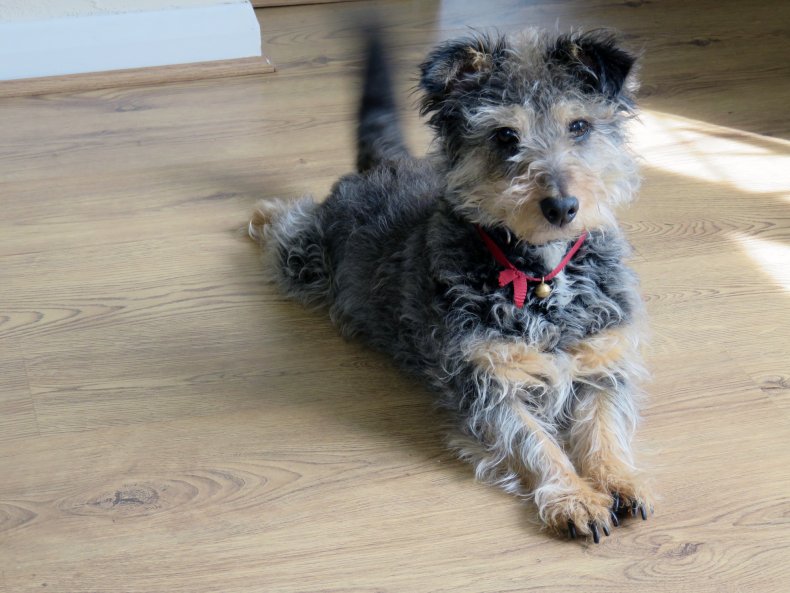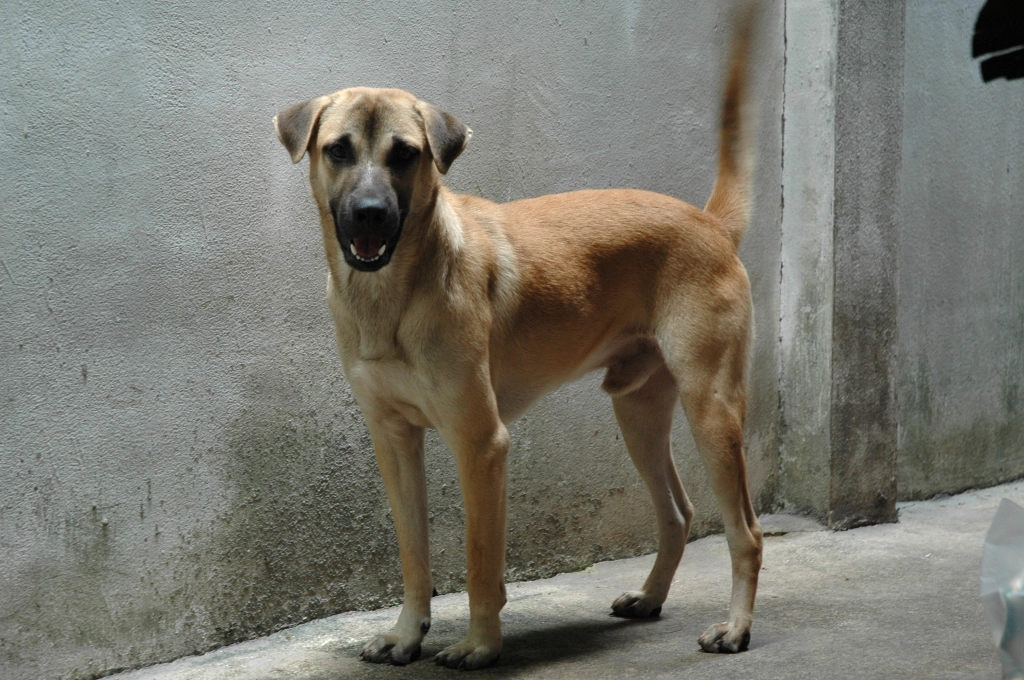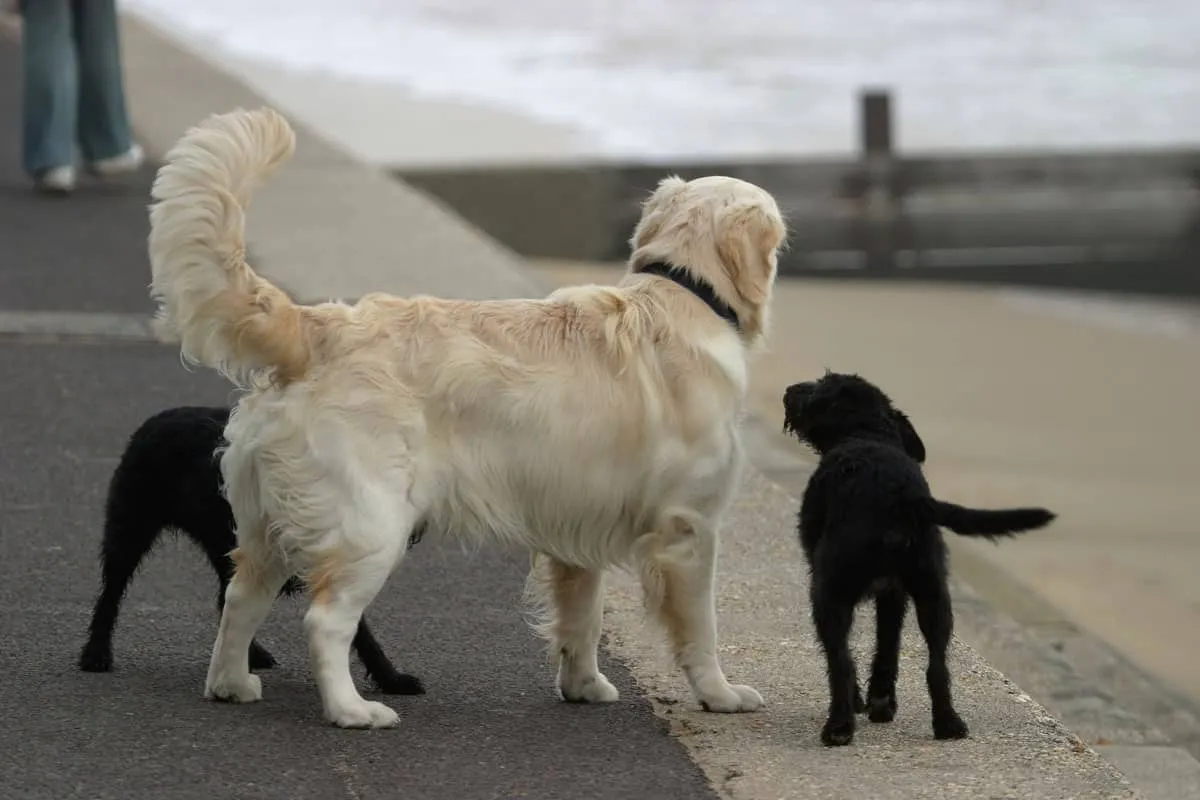When it comes to a waggy tail, we often see it as a sign of a happy dog. Yet, there is research that dog tail wagging doesn’t always convey happiness. You have to remember that a dog’s tail is a communicative tool that our canine friends use to express emotions.
Dogs express these emotions to their dog owner, but also to other animals. Yes, in most cases, a wagging tail means happiness.
Yet, we have to talk about all the features of dog tail language. It might surprise you. Let’s take a look.
Why Do Dogs Wag Their Tails?
First things first. Dogs wag their tail to convey different emotional responses, including happiness, anxiety, excitement, submission, nervousness, and more.
Usually, when a dog is relaxed, its tail will sit in a resting position. It might depend on the breed of your dog. Remember, some dogs have curly tails, and stiff tails, and others have long tails.
Studies have shown that the pace and position of the wag often convey emotion. Those can be either positive emotions or negative feelings.
So, when a dog is frightened or submissive, it will hold its tail down and possibly wag it a little between its legs. This is a familiar image of a dog that has been told NO or OFF by its dog owner. This puppy is looking apologetic and guilty.
Dogs that are alert or excited hold their tail higher than their natural position. The high tail wag is a past paced wag which means you have a happy dog.
A curious dog holds its tail straight out.
What Messages Do Dogs Communicate?
If you want to understand dog communication, you need to look at dog body language. Dogs cannot talk like we do, so they communicate using their body language, tail, and barks. What message does dog tail wagging send?
Before you understand “tail language” you have to recognize the neutral and natural position of your dog’s tail. Not all breeds have a similar tail. Most dogs have tails that hang down near their heels when they are relaxed. But some dogs, say, Beagle, hold their tail vertically. Greyhounds and Whippets curl their tail under their bellies.
Here are some messages depending on the tail position.
- Preparedness or agitation: When your dog is alert, it will stand with its ears up and tails raised. The position indicates your canine is watching and ready to confront what caught its attention
- Negotiation: When your dog stops wagging its tail and freezes, it means it wants to divert a threat without being aggressive. Some dogs often do it when they are petted by strangers. It is their way to say do not interact with me and do not pet me
- Aggression: When your dog’s tail moves from a neutral position to a vertical one, or arches over the back, the dog is showing its aggressive stance. It doesn’t mean your dog is aggressive. It means they are in a state where they are ready to fight if someone invades their territory. And the higher the tail, the greater the threat that comes their way
- Submission: Dogs show their submissive state by moving their tail from a neutral position to a lower one. Tucked tail between the rear legs means your dog is also scared. He sees the threat and asks not to be harmed. Dogs do this because the lower tail position reduces the amount of scent emitted from the anal glands, allowing the dog to remain in the background
- Happiness: When your dog holds its tail in a neutral position and adds a healthy tail wag
Now, besides the tail position, you also have to look at wagging speed. I bet you didn’t know this. But your dog can wag its tail slower or faster. And depending on the speed, your canine friend sends a different message. As a pet owner, you have to know it.
- Excitement: The faster the tail wag, the more excited your dog is. Tail wagging can range from slow to extremely fast, the latter also known as flagging
- Insecurity: When the dog is tentative about meeting a new person or another dog, the wag will indicate insecurity
- Friendliness: Friendly dogs wag their tail more freely and even wiggle their hips
- Aggression: This is when a dog wags its tail very fast while holding it vertically. It shows an active threat. Yes, a dog wagging its tail may bite a person or another dog. It is all about where the tail position is. Even dogs that are trained for an illegal dog fight wag their tail before the fight.
There is so much study and research done into dog tail wagging. Even the direction of the wag is significant. Dogs often wag their tail to the right when they are happy and confident. And they wag it to the left when they are afraid.
Can Dogs Without Tails Communicate?
Yes, a dog without a tail can communicate as well. There are limitations. Remember, tails are not the only way of communication. You also have to look at the dog’s body language.
This includes ear position, facial expression, and stance. Dogs will even bark or growl to communicate their intention. Barking is another way dogs use to communicate. Not all barks are aggressive ones.
Tail Wagging Movement
Here are some examples of tail movement and what it means. You must look at all aspects of your dog and its wagging tail to understand your dog’s intention.
- A slight wag, where each swing is only of small breadth, is something dogs use during greetings. It is a tentative communication, saying, Hello there
- Broad wag is friendly and says “I am not challenging or threatening you”. It also means your dog is pleased
- Slow wag with the tail at half-mast is less social than other tail signals. Slow wags are usually signs of insecurity. In this case, the tail is neither in the dominant high nor submissive low position
- Tiny and high-speed movements that look like your dog’s tail is vibrating means the dog is about to do something, either run or fight. If the tail is held high, it means an active threat
Does The Breed Matter?
Yes, tail positions and motions can differ between different breeds. Not all breeds have the same tail. Some dogs naturally carry their tails low. For example, greyhounds carry their long tail low. Pugs, on the other hand, have tiny curly tail that is always pointing upward.
Remember, most dogs hang their tails down near their hocks or heels. Observe the position and movement to understand what dog tail wagging really means.
Tails Are Not Just For Communication
Final words here. Dog tails are not just for communication. They also serve a purpose. For example, dogs use their tails to aid in balance and stability.
Just watch a dog turn at high speed in slow motion. Play a YouTube video of it if you like, and you will see how your dog uses its tail for stability.
Dogs also use their tail as a rudder when they are swimming.









